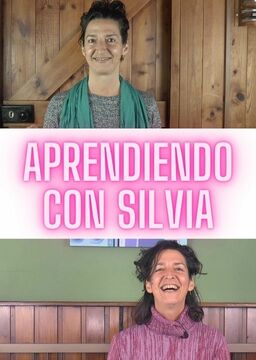









Difficulty:
 Beginner
Beginner
Colombia
The word, "vaina," is popularly used in many Latin American countries, and according to Carlos, who explains its origin and diverse uses, "defines everything and nothing at the same time."
Difficulty:
 Beginner
Beginner
Colombia
Carlos and Xavi point out to us a number of cases in which different words are utilized for the very same object or concept in Spain versus Colombia.
Difficulty:
 Beginner
Beginner
Ecuador
Ana Carolina introduces us to some Spanish vocabulary for personal hygiene products we might pack for a trip, both for use on a daily basis and to be prepared should an emergency arise.
Difficulty:
 Beginner
Beginner
Colombia
While in Colombia, the second person plural pronoun, "ustedes," is typically used to address more than one person as "you," both formally and informally, in Spain, "vosotros" is much more commonly used on an informal basis. Carlos and Xavi provide us with several examples of how the same idea would be expressed using either "ustedes" or "vosotros."
Difficulty:
 Beginner
Beginner
Colombia
With several examples, Carlos and Xavi continue to demonstrate to us the difference in pronunciation of the letters "c" and "z" in Colombia and Spain.
Difficulty:
 Beginner
Beginner
Colombia
Carlos and Xavi, Carlos' Spanish friend, invite us to observe the difference in pronunciation between the Spanish from Spain and Latin American Spanish, particularly as regards the letters "c" and "z."
Difficulty:
 Beginner
Beginner
Colombia
Lida, Cleer and Lila share with us some of the unique traditions of Colombia's Christmas season, which lasts from late November until early January.
Difficulty:
 Beginner
Beginner
Argentina, Colombia
Carlos and Cyndy teach us to identify the difference in the manner in which the "double l" and "y" letters are pronounced in Colombia versus Argentina, with several examples.
Difficulty:
 Beginner
Beginner
Spain
When Doctor Consejos [Advice] fails to notice any improvement in her patient, Ander, she tries a new strategy in which she presents him with several hypothetical situations that can help Yabla students understand the second conditional in Spanish as well.
Difficulty:
 Beginner
Beginner
Colombia
Carlos explains to us in detail the imperative of the first person plural with many examples as well as providing us with the conjugations for several reflexive verbs.
Difficulty:
 Beginner
Beginner
Spain
Through an entertaining dialogue between Doctor Consejos [Advice] from El Aula Azul and her patient, Ander, about his terrible week, we see several examples of the "no fault construction" with the impersonal pronoun "se."
Difficulty:
 Beginner
Beginner
Ecuador
In this lesson, Ana Carolina enumerates some common conditional conjunctions in Spanish as well as three types of conditional clauses with examples.
Difficulty:
 Beginner
Beginner
Colombia
Carlos explains in detail the correct use of the negative form of the imperative tense, providing several examples.
Difficulty:
 Beginner
Beginner
Ecuador
Ana Carolina takes us to a clothing store to teach us some useful vocabulary and phrases for shopping.
Difficulty:
 Beginner
Beginner
Spain
Doctor Consejos [Advice] de El Aula Azul listens to and interprets her patient, Ander's strange dream. Listen closely in order to gain a better understanding of how "hay" [there is/are] and "estar" [to be] are used in Spanish.
Are you sure you want to delete this comment? You will not be able to recover it.